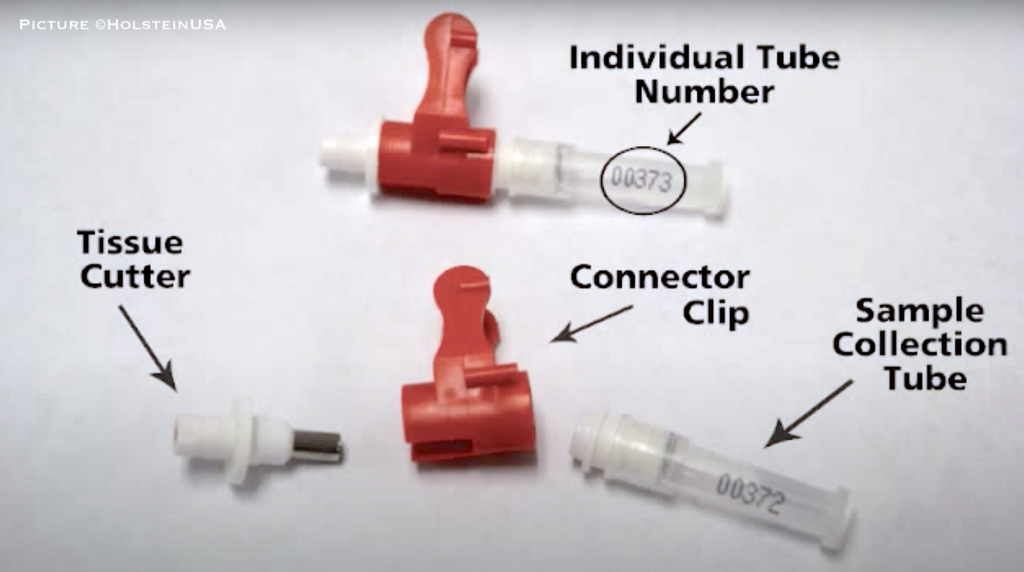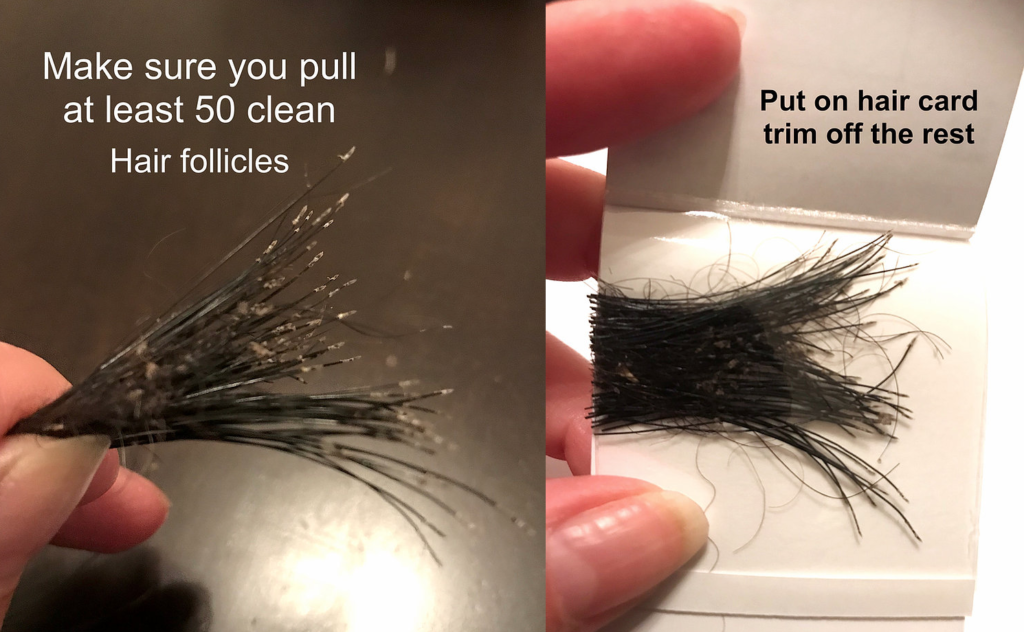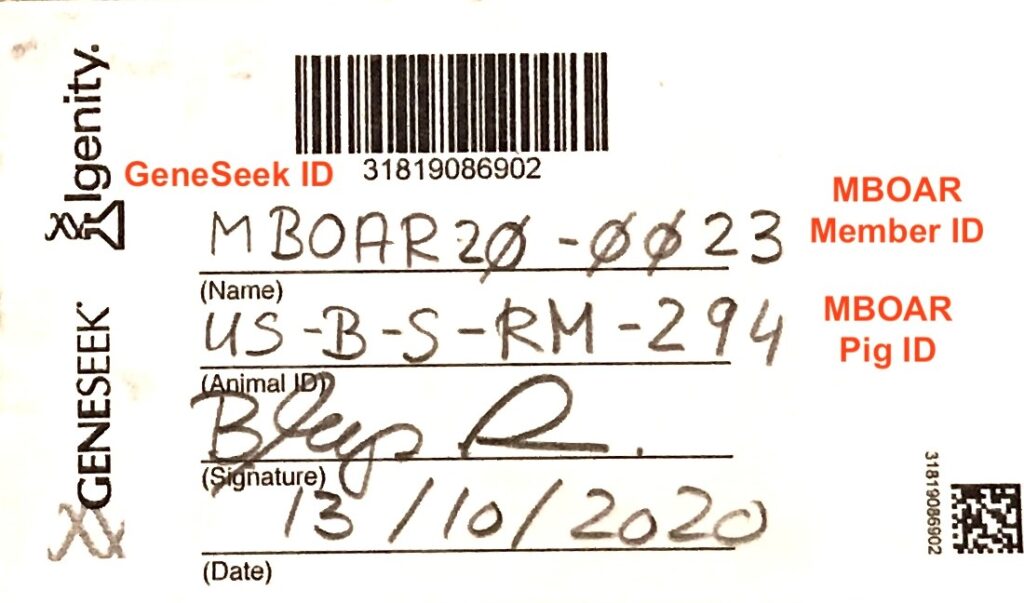Important! Please ensure that your stock are eligible for registration before purchasing DNA testing supplies or proceeding with registration steps below. Please proceed to Animal Qualification page for more information. If you are unsure about your animals eligibility, we encourage you to submit any information that you currently have on your animals to MBOAR for review.
All animals without at least 3 generations of lineage are on hold for registration at this time
8 EASY STEPS TO REGISTER ANIMALS
1. REGISTER FARM “PIN”
The USDA Farm Premise Identification Number (PIN) is a unique identifier assigned to the address where you raise your animals and is required for your farm ear tag system. This identification will make it possible to keep track of the pure Mangalitsas in the USA in the future. It is a means to trace livestock for several reasons; a health and safety emergency, livestock that cross state lines and livestock that enters a USDA slaughterhouse.
This PIN is required to register as a member of MBOAR and is required when customizing USDA 840 ear tags for your animals.
2. ORDER RFID 840 EAR TAGS & AFFIX TO EACH ANIMAL
Your USDA Farm (PIN) must be assigned before you can obtain USDA 840 ear tags. You will need tags (button sized seem best for swine) for each of your registered animals and for any new piglets you intend to register.
Assign and affix an 840 tag to each animal and keep it in your records. The 840 number is required as part of the animal’s registration process.
While MBAOR doesn’t recommend a specific vendor over another, there is a great selection of tags and applicators at Valley Vet for any type of livestock. Below is an example of a USDA 840 button tag and a second larger tag that can be used as your personalized farm tag.

Retain your order form and receipt upon recieving your tags as this information may be needed to obtain certain “Certified Vet Inspection” CVI paperwork.
Some state and agricultural departments will provide you free 840 tags. If and when you request your farm PIN from the state agency, ask if they can provide 840 tags that are associated to your new PIN.
3. BECOME A MEMBER
MBOAR is a non-profit organization. Your membership dollars are used to aid the promotion, research and development of the Mangalitsa breed as well as maintain the Breed Organization & Registry.
Upon membership you will receive a unique member number which will be recorded as the “name” on each DNA submission to Neogen.
4. ORDER DNA SAMPLE COLLECTION MATERIALS FROM NEOGEN
DNA must be gathered from animals that are to be registered with MBOAR where it will remain on file and be used to show proof of parentage for future piglets by DNA.
Hair or blood cards must be ordered before you can begin registering animals with MBOAR. A card will be used for each animal and each card has a unique barcode/genetic sample number. The barcode/genetic sample number is required to complete the animal’s registration packet with MBOAR. Hold on to the cards until MBOAR approves the animal and then use the card to submit the DNA to Neogen.
Assign a card to each animal that will be registered with MBOAR. (to keep things straight, write the animals name, as you know it, in light pencil on the back of the card). When filling out the card, your MBOAR member ID will be recorded as the “name”. The Animal ID number will be assigned by MBOAR after your animal’s registration packet is approved.
The Genetic Sample number is under the barcode on the hair or blood card and will be entered onto the registration form that is submitted to MBOAR when you submit your animal’s full and completed registration packet.
- Order cards from Neogen
- Assign a card to each animal
- Take the barcode/genetic sample number from the card and enter on the animal registration form
- Set the card(s) aside and wait for the Animal ID number


inside the hair card
DNA can be collected by taking a blood sample, hair sample or tissue sample. Blood and hair sample cards can be ordered from NEOGEN. Allfelx makes a tag applicator that takes a tissue sample at the same time the eartag is applied to the pig.
All these items can be found at the NEOGEN website:
5. GATHER DNA AND PICTURES
DNA
We advise pulling the longer hair from the neck of a Mangalitsa pig with a pair of pliers. It is vital that you collect the follicles and do not use any tool that will cut the hair.
MBOAR promotes tissue sampling (with TSU Gun) as it is the most animal friendly method for piglets and the most reliable method to collect DNA. However, taking a tissue sample from a full gown pig can be difficult thus in this instance, MBOAR advocates the easier method of pulling hair. NEOGEN (GeneSeek) advises not to collect hair sample from pigs younger than 7-8 months as the follicles are often left behind in the hide of the young pig.
MBOAR promotes the use of the TSU Gun to get DNA samples from piglets and stock up to 12 months of age. Below are three videos demonstrating the tissue sampling equipment.
If you do not want to use the tissue sample method, Karla Denton (an MBOAR member) made this video showing how to pull hair from a piglet older than 8 months.
EXAMPLES OF TISSUE SAMPLER & COMPLETED HAIR CARDS
The pictures below show different parts of the Tissue Sample Unit/Tube, how to attach the hair to the hair car and how to complete the information required on the Hair or Blood cards you ordered from Neogen.



- When you become a member your MBOAR member ID will be recorded as the “name”
- The animal ID will be assigned after your animal lineage is approved by MBOAR
Here is a link to the Australian website from GeneSeek providing an explanation for reasons why a hair, blood or tissue sample might fail.
PICTURES
Profile pictures should be taken from a low position that is at the eye level of the animal standing on flat ground. Ideally the head is up and looking straight ahead.
Rear pictures should show the full rear and testicles if present. Front pictures should be taken at the animal’s eye level and pictures of the feet should be on firm ground with no interference of grass, straw or mud.
6. COLLECT ANIMAL’S DOCUMENTATION
The following information will be required to complete the registration packet for each animal through the MBOAR website.
- The lineage documentation either provided to you upon purchase OR proof of 3 generations
- Photos (profile, rear, front, feet)
- The Genetic Sample ID number from the hair/tissue/blood card
- The 840 tag number and Farm tag number (if you use farm tags)
7. REGISTER YOUR STOCK ONLINE
- Visit the animal registration page and enter the requested information
- Enter the animal’s name and relevant information
- Upload the appropriate pictures
- Enter the animal’s 840 number and Genetic Sample ID number (and Farm Tag if you created one for your farm.)
- Attest to the breed exclusions and Inclusions and submit the registration form
Upon your animal satisfactorily meeting the requirements for registration, MBOAR will send you a reply containing your animal’s unique Animal ID number.
You will then record the Animal ID number on the hair, tissue or blood card and send it with your animal’s DNA to Neogen.
8. SUBMIT DNA
Upon receipt of an approved submission form from MBOAR you will take the unique Animal ID number from the form and write it onto the animal’s card. Mail your completed DNA card with samples to Neogen. The results will be mailed to MBOAR and your animals will then be recorded in ZooEasy. You will recieve a certificate from MBOAR that documents your animal with a unique identifier. Please keep it in a safe place.
Congratulations! You have completed the process of registering your Mangalitsa and are contributing greatly to the breed’s health and survival!
A WORD FROM NEOGEN
How and when to collect DNA samples to produce the best genomic test results?
“Whether the sample is from tissue or another source, recording it involves associating an identification number for the animal with the identification number of the sample, and is arguably the most important part of the process — though seldom recognized as such.
More than half of the focus for development of efficient sample collection systems is around the process of associating the sample barcode with the animal’s permanent I.D. to ensure “chain of custody” — like a crime scene investigation.
The sample barcode is the vital piece of information from the lab perspective, but in the end, the information must be related to the animal I.D. to be useful for the dairyman. Sample identification and animal I.D. recording can be done by hand, however, this method can be time-consuming and lead to transcription errors.”
